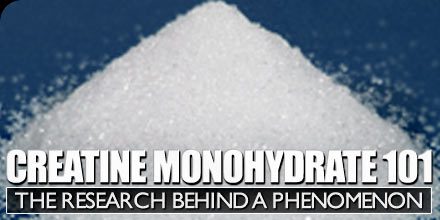Creatine Monohydrate 101: The Research Behind a Phenomenon
As a certified sports nutritionist with over two decades in the fitness industry, I’ve seen countless supplements come and go. Many are just expensive placebos, while others have side effects that simply aren’t worth the risk. But then there’s creatine monohydrate.
Creatine monohydrate is one of the most researched and effective supplements on the planet, and for good reason.
Creatine is a substance your body produces naturally. You can also find small amounts of it in foods like red meat and fish. Over 90% of the creatine in your body is stored directly in your muscles, ready to be used for energy. This is why so many bodybuilders and athletes I work with consider it an essential tool for getting real results.
This allows you to push harder and get more reps during your workouts. That extra work is the signal your body needs to stimulate protein synthesis, which is the process of repairing and building muscle tissue.
Creatine monohydrate also has a secondary benefit called cell volumization. It draws water into your muscle cells, making them swell, which not only gives you a more “pumped” look but can also trigger muscle growth pathways.
Disclaimer: This article is for informational purposes only and is not meant to treat or diagnose any condition. It is recommended that you speak with your doctor before starting any exercise program, changing your daily nutrition, or adding any supplements to your regimen.

The Right Way to Take Creatine Monohydrate
There are two proven methods for starting with creatine monohydrate, and the best one for you depends on how quickly you want to see results. The most common approach is the “loading phase.”
For this method, you take 20 grams per day for 5-7 days, usually split into four 5-gram doses. After the loading phase, you drop to a daily maintenance dose of 3-5 grams to keep your muscles saturated.
Alternatively, you can skip the loading phase and simply take 3-5 grams per day from the start. It will take longer to maximize your muscle stores, typically around 28 days, but the end result is the same.
Here’s a pro-tip I always give my clients: take your creatine monohydrate with a source of carbohydrates. The insulin spike helps shuttle creatine into your muscles more effectively. Mixing it into a post-workout shake with protein and carbs is a perfect strategy.
The Science Behind the Strength
So, what’s actually happening inside your body? Your muscles use a molecule called adenosine triphosphate (ATP) for explosive, high-intensity movements like lifting weights or sprinting.
When you use ATP, it loses a phosphate group and becomes ADP (adenosine diphosphate), which is useless for energy. This is where creatine comes in.
Supplementing with creatine monohydrate increases your stores of phosphocreatine (CP). Your body uses CP to quickly donate a phosphate back to ADP, rapidly turning it back into ATP. This gives you more energy to perform at a high level for longer.
According to the International Society of Sports Nutrition (ISSN), this can increase your phosphocreatine stores by 10-40%. This energy boost can lead to a 5-15% improvement in maximal power and strength.
As Melvin Williams noted in his research, “The combined total of ATP and CP might sustain maximal energy production for approximately 5-10 seconds of maximal effort” (Williams, 1998). By increasing those stores, you extend that window of peak performance.





